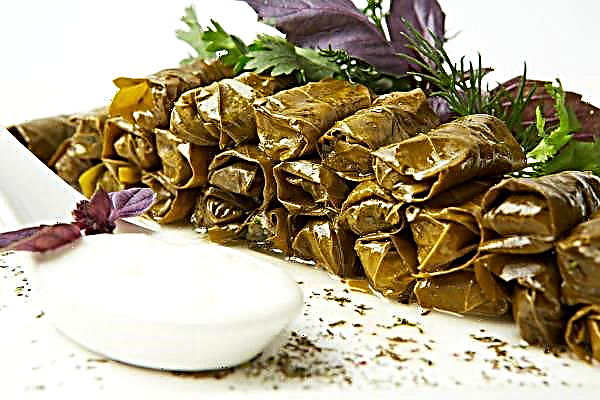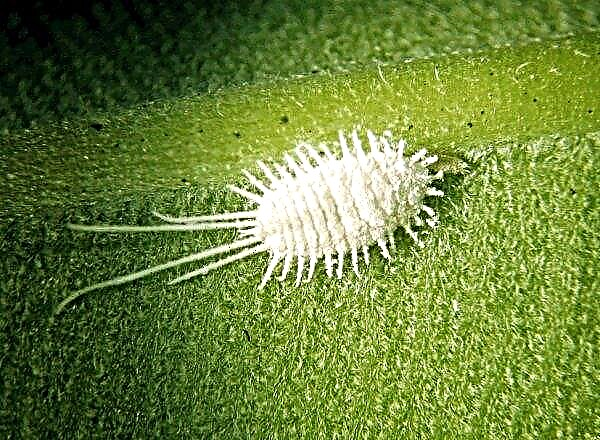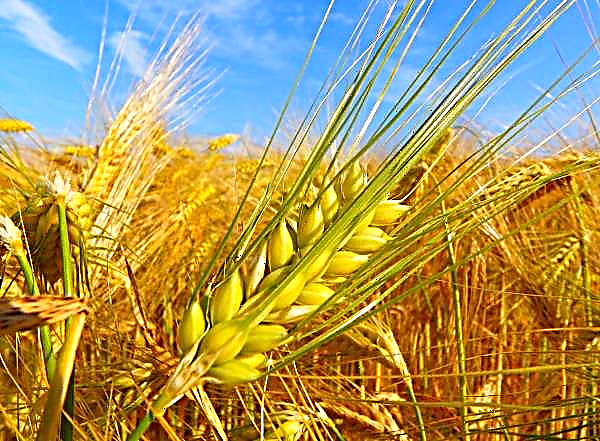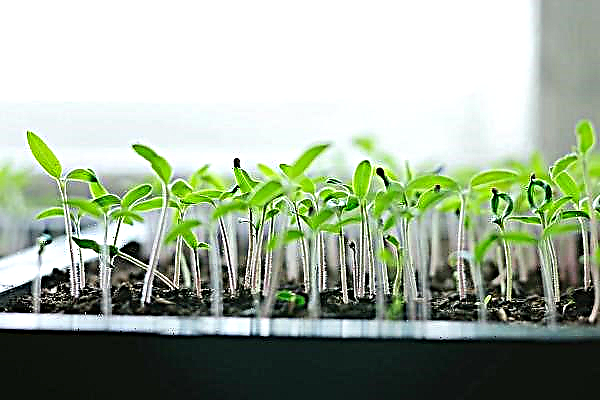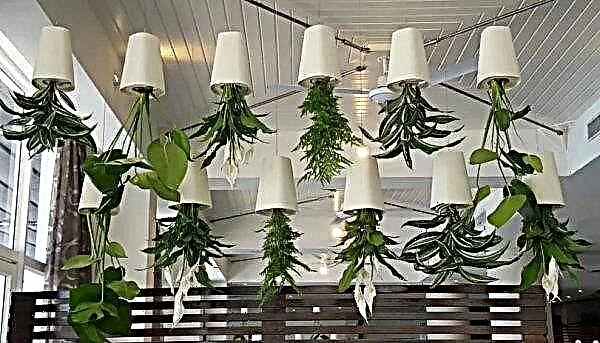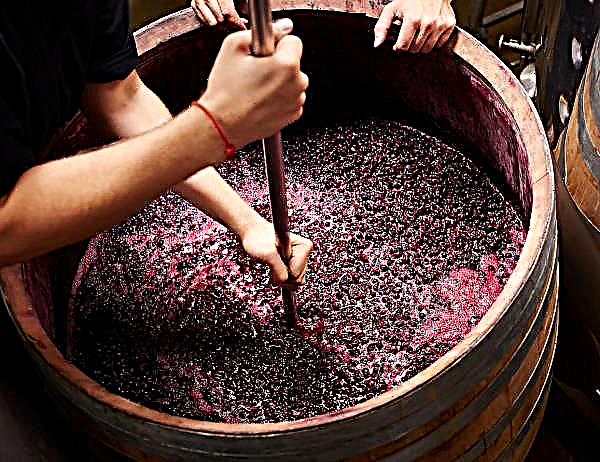Adherents of smoking from year to year prefer self-growing and making tobacco instead of buying cigarettes. Today we will talk about ways to process tobacco for smoking at home.
What is fermentation?
Fermentation is a natural biological process of changing the chemical composition of a plant. Simply put, the product undergoes fermentation processes that gradually reduce the amount of moisture, the content of carcinogens and the strength of tobacco.
- So, what does the process give:
- leaves become elastic, losing fragility;
- aggressive resins and essential oils are destroyed (bitterness goes away);
- smoke acquires a pleasant aroma;
- the aftertaste becomes pleasant;
- leaves gain better burning ability;
- tobacco is stored longer, not susceptible to fungi.
Did you know? In 2004, trade in tobacco products has been banned in Bhutan. For violation of the law, a real prison term is provided.
The fermented product undergoes several processing processes until ready to eat. The leaves of the plant under industrial conditions, in addition to sorting and drying, can be subjected to fermentation up to 6 times, such as Cuban smoking tobacco.
The first procedure is carried out in dark rooms with moderate humidity and high temperature. At the same time, the product is complex in a certain way: piles about a meter high, called the “pylon”. This natural fermentation procedure occurs under the influence of its own moisture in the leaves and a certain microclimate. In densely folded pylons, the color of the leaves changes: from golden yellow to brown. This happens within a month.

After that, the product is sorted and, depending on the quality, is distributed as intended:
- for cigars;
- cigarettes;
- cigarillos;
- for the tube;
- for hookah and stuff.
Fermentation Tobacco Preparation
The preparation of smoking tobacco at home as well as in production begins with sorting. Leaves sorted out, removed substandard: rotten, burnt by the sun. Plates growing on the top of the bush are fermented separately: they are the most fragrant, saturated with astringency. It is desirable to “feed” the raw materials - this will be the primary fermentation. For this, the raw materials are moistened and left in the room for 7-10 days, periodically moisturizing.
The next process is drying. You can dry the foliage in the sun by stringing the bushes on a lace and placing it in special frames under the sun's rays. In this case, there should be a distance of 4–5 mm between plants. The second way: to dry in a room, for example in a barn, in a house it can be a balcony or a porch.Important! Green leaves cannot be fermented; they still contain chlorophyll. For this, they carry out languor.
Air temperature for quality drying is + 25 ... + 30 ° С. There should not be a draft in the room, but it is necessary to ventilate it. Signs of preparedness of the dried product are a color change to a darker shade and a characteristic crunch upon compression. The third stage of preparation is hydration. The bushes are abundantly moistened using a watering can or spray gun and covered with woven material for about an hour.

After they check their readiness by squeezing a handful of tobacco in their hand. It should be soft and moist, but not wet. Many remove the central vein in the plate: it is believed that because of it the product may become bitter. The second drying procedure follows: it is needed to give the plates more elasticity. For this, the leaves are dried to a state of dryness, while preventing their fragility.
Conditions for tobacco fermentation
For the fermentation of tobacco does not require special equipment, you can use the technical devices available on the farm. The main point of a successful process is what temperature was observed during the preparation of raw materials.
Inexperienced in this matter, people ferment tobacco in a pan for about 7 hours, previously placed in cans. The approach is fundamentally wrong, because when boiling, the temperature reaches + 100 ° C, and most of the enzymes of the raw material are destroyed. The correct process should take place at temperatures up to + 55 ° C, within 7-14 days.
In the village, some craftsmen successfully use the incubator. The device can hold the set temperature, humidity, which is easy to adjust. In addition, the time of chickens and the collection, respectively processing of tobacco, occur at different times of the year.Important! If you do not follow the rules of preparation and the conditions of fermentation, tobacco acquires an unpleasant odor resembling ammonia.
Methods of fermenting tobacco at home
One of the methods of fast fermentation is a procedure carried out using a Russian furnace. The dried leaves are sprayed with spring water and placed in plastic bags in piles. Packets of raw materials are placed on a heated stove (on a stove bench) and covered with dense material. The furnace is heated every 2 days, the whole process takes about 10 days. Water for spraying is prepared with honey: 200 ml / 5 g. Gradual heating on the stove is one of the methods to reduce the strength of tobacco.
In the sun
Fermentation in the sun is the best way to extend the shelf life of raw materials, since ultraviolet is harmful to mold.  The raw materials are laid out on the surface of metal: it quickly heats up and does not have time to cool down very much at night. Estimated availability in 10 days. After the procedure, it is advisable to dry the raw materials a little, and then you can try.
The raw materials are laid out on the surface of metal: it quickly heats up and does not have time to cool down very much at night. Estimated availability in 10 days. After the procedure, it is advisable to dry the raw materials a little, and then you can try.
In the microwave
One of the home appliances that allows you to control the fermentation temperature is a microwave. The raw materials before the procedure are cut, moistened in wine and dried for several days in a bag on a heating device. Then put in the microwave at minimum power for 40 minutes. Repeat the manipulation three times. The strength of the leaves will drop by 30–40%, and the aroma and aftertaste, due to dry wine, will be richly fruity.
Did you know? The ban on pipe smoking in Russia was canceled by Peter I, who also initiated the appearance of tobacco factories.
In the oven
Question: how to make a fermenter, disappears in the presence of an oven. The device as well as a microwave allows you to adjust and keep a certain temperature. After the languishing procedure, the leaves are sprayed with water with a small amount of cognac or other alcohol, placed in plastic bags in dense stacks, left warm for a day. Then the raw materials are cut into strips and placed in the oven. The process occurs at a temperature of + 50 ° C for a week. After which the product is dried in the fresh air.

In a slow cooker
The slow cooker allows you to dry tobacco leaves sequentially in layers, so the method is the closest to natural fermentation. The temperature regime is set at + 50 ° C, the steam valve is closed with foil to avoid evaporation of moisture. Raw materials are placed in cloth bags and placed on pallets. Periodically, the packages are interchanged from top to bottom for a uniform process. The procedure takes about 3-4 hours.
Useful Tips
Tobacco exposure can last several years, it all depends on the desire and experience of the manufacturer. Experienced manufacturers of smoking tobacco recommend keeping the leaves in alcohol: wine, liquor, vodka - this will add piquancy to the aftertaste and a pleasant aroma.
Some more tips:
- If you want to keep tobacco for more than a year, use varieties of oriental selection.
- After drying, the raw materials are processed under a press, after which the plates acquire a convenient shape.
- Before slicing, the leaves must undergo primary fermentation and subsequent drying.
- For slicing, you can use the kitchen noodles cutter.
- After fermentation, it is advisable to allow the product to rest for up to three months.
- If condensation appears on tobacco cans during fermentation, the product must be removed and dried.



